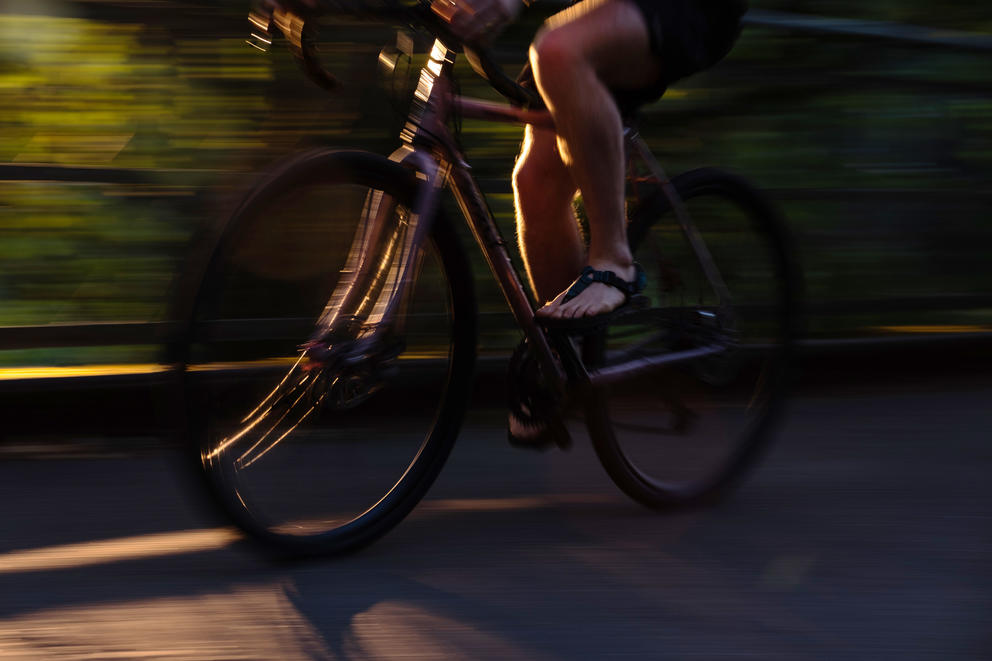Ivan Fabic, a respiratory therapist at Harborview Medical Center, tries to limit himself to one collision per year. But once he got into two, only a week apart. The first happened in June in a two-way bike lane on Second Avenue downtown — Fabic was sideswiped by a car pulling into a parking garage. The second collision was with a fellow cyclist on another two-way bike lane on Fairview Avenue in South Lake Union.
“I was kinda anticipating that something like [these collisions] would happen,” he said.
Fabic’s experiences are consistent with his commentary in the informal Crosscut reader survey: “Commuting to work is a struggle for survival. Pedestrians are oblivious to multi-use path rules. Bike lanes are treated as an afterthought. Drivers are clueless at best and outright homicidal at worst.”
The League of American Bicyclists ranks Washington third in the country for bicycle friendliness — and some Seattleites agree. Three of the 11 reader respondents said that Seattle is more bike-friendly than other American cities.
Still, they had plenty of complaints. Fabic isn’t the only reader who talked about bike collisions. Walt Hill, an affiliate associate professor of microbiology at UW, wrote that he was hit by a bus in the Green Lake neighborhood.
According to the Washington Traffic Safety Commission, King County experienced a peak of seven fatal cycling collisions in 2018. They’ve trended downward since then — in 2022, there were four. Between 2013 and 2022, the commission reported, 20% of bicyclist fatalities in King County involved a distracted driver, and 8% involved a speeding driver.
“It’s very difficult to get from one point to another without interacting a good amount with vehicles, in the sense that you’re not in a protected bike lane,” Fabic said.
A greater awareness of bikers on the road — especially in the summer, when more people are riding — is essential to creating a safer environment, Fabic said.
Another reader, Spencer Nilsson, believes improving city bike infrastructure would be helpful. Nilsson said he had to learn how to best navigate the city by biking it over and over.
“SDOT does do a good job … but there’s so much that they don’t explain that you need to figure out in order to navigate safely,” Nilsson said. “For instance, if you’re getting across the West Seattle Bridge onto Harbor Island, there’s this weird little hairpin that you’re supposed to take. There is signage for it, but it’s not well articulated.”
Nilsson’s opinion aligned with those of many respondents. While eight of the 11 respondents agreed that Seattle can be bikeable, a few of those comments came with caveats: Safety and bikeability depends on where you are, and both drivers and pedestrians lack awareness of cyclists.
Reader John Zilavy said that while he thinks the city gets points for increased biking infrastructure, the pandemic negatively affected his approach to biking.
“My fear of biking has increased since COVID because of the driver anger, and driving dangerously with no fear of legal consequences that is rampant,” Zilavy wrote. “I would like the city to address these driver issues.”
According to an email from SDOT, there were 219 bicycle collisions in 2022 — an increase from 212 in 2021 and 177 in 2020. Of those 219, 27 involved serious injuries or fatalities. Officials don’t say whether they think the pandemic led to an increase in collisions.
Readers seemed to agree that there’s always room for improvement. Still, efforts by the city to increase bike safety haven’t gone unnoticed. Nilsson noted the improved connection to the Duwamish Trail and the buildout of the Waterfront Trail as examples.
“The barrier for entry for new riders is still too high, but lowering all the time,” Nilsson says.
Correction: A previous version of this article incorrectly stated the percentages describing the causes of bicycling fatalities in King County. The article has since been updated.
Get daily news in your inbox
This newsletter curates some of the most important headlines of the day from Crosscut and other news outlets.



